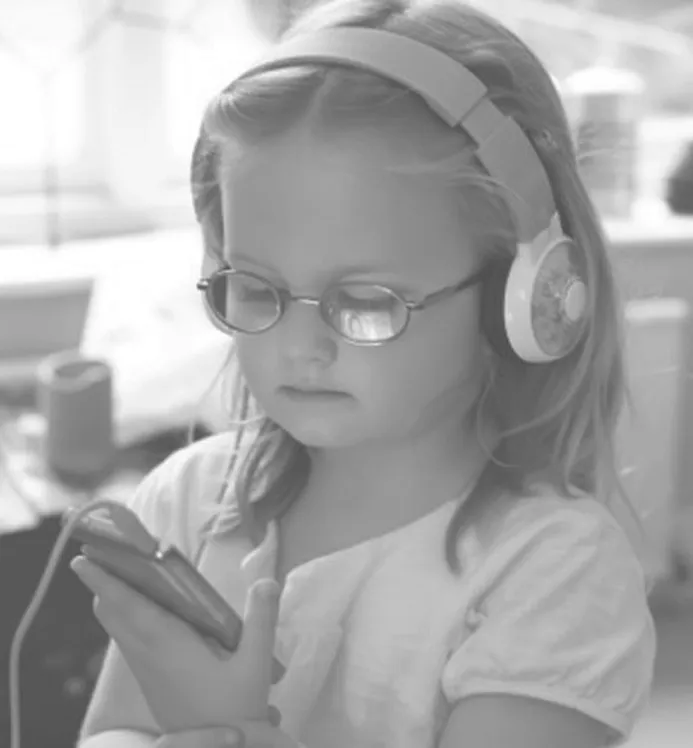The Myopia Crisis and Why Children Should Spend More Time Outdoors近视危机下儿童需增加户外活动
2018-01-08阿里安娜恩俊王恒娟审订袁圆
文/阿里安娜·恩俊·查 译/王恒娟 审订/袁圆
By Ariana Eunjung Cha

近视,又称短视眼,正在成为一种在全球蔓延的疾病。
[2]在美国和欧洲,近二分之一的青年患有近视,这一比例是其祖辈同龄时期的两倍。中国的近视问题更加严峻,青少年的近视率为80%到90%,而60年前该比例仅为10%到20%。
[3]为什么有的人近视(看近物清楚,看远物模糊),有的人直到白发暮年仍然保持1.0的视力?研究人员过去一直认为这主要是由基因决定的,而现在,他们更关注环境因素,更确切地说是特定的环境因素:成长过程中的户外活动时间。
Myopia1myopia近视眼。, or nearsightedness2nearsightedness短视眼。, is becoming a problem of epidemic3epidemic流行性的。proportions for the world.
[2] Roughly half of young adults in the United States and Europe have it, double the percentage when their grandparents were the same age. In China, the trend is even more alarming—with 80 percent to 90 percent of teens and young adults with the condition versus 10 percent to 20 percent 60 years ago.
[3] Researchers used to think that the explanation for why some people become nearsighted (able to see close objects more clearly than those far away)and why some continue to have 20/20 vision420/20 vision美国视力检测标准,相当于中国的1.0视力(在距视力表20英尺或6米处,能够看清“正常”视力所能看到的东西)。until they are old and gray was mostly a function of our genes. These days the focus is on environmental factors—or, more accurately, one specif i c type of environmental factor: How much time you spend outdoors while growing up.
[4] In a new study published in the Journal of the American Medical Association, researchers report that children who spent 40 minutes more time outdoors a day were much less likely to be diagnosed with myopia.The research involved 1,903 children in grades 1 through 12 at a dozen schools in the large southern Chinese city of Guangzhou near Hong Kong.
[5] Half of the schools added one additional 40-minute class of outdoor activities during the day, and parents were encouraged to take their children outdoors after school and during the weekends. The remaining schools,which kept their normal schedule,served as a control.
[6] Led by Mingguang He of Sun Yatsen University, the study team found that after three years 30.4 percent of the children in the first group had myopia versus 39.5 percent of the control group.
[4]发表在《美国医学会杂志》的一项新研究表明,每天户外活动时间增加40分钟,孩子患上近视的可能性更小。该研究在中国南部临近香港的大城市广州展开,选择了1903名学生作为研究对象,他们来自12所学校,年级分布从小学一年级到高中三年级都有。
[5]其中的6所学校每天增加了一节40分钟的户外活动课,同时鼓励家长在放学后和周末多带孩子在室外活动。另外的6所学校则作为控制组,保持原先的时间安排。
[6]在中山大学何明光教授的带领下,该研究小组发现,三年后实验组学生的近视率为30.4%,控制组为39.5%。
[7]这说明近视率相对降低了23%。
[8]近视是指光线进入眼睛后焦点落在视网膜之前而导致视物模糊。现代社会,借助框架眼镜、隐形眼镜和激光矫正手术,近视倒没有带来很大麻烦。但是,对有些患者而言,近视则可能引发更严重的眼科疾病,如白内障或视网膜脱落。研究人员通过对雏鸡的实验推断,较强的光线会刺激多巴胺的释放,从而有可能防止儿童在成长过程中眼球变形。
[7] That’s equivalent to a 23 percent relative reduction in incident myopia.
[8] Nearsightedness is a condition that occurs when the light coming into an eye doesn’t focus on the retina5retina视网膜。but in front of it, making things look blurry.It’s usually only a minor inconvenience for many people in today’s modern world, with options for eyeglasses,contact lenses and laser surgeons. But for some it can lead to more serious eye disease, such as cataracts6cataracts〈医〉白内障。or retinal detachment7retinal detachment视网膜脱落。. Based on studies with chicks, researchers have theorized that bright light triggers the release of dopamine8ine〈生化〉多巴胺。, which might help keep the eyes from becoming misshapen as they develop as a child ages.
[9] The results of the Guangzhou study, while remarkable, were not as marked as the researchers expected.
[10] Based on previous, smaller studies they had hoped the reduction might be as high as 50 percent. That may be explained by the fact that the outdoor exposure was increased by 40 minutes while in some previous studies it has been as much as 80 minutes.

[9]该项研究虽取得了显著成果,但并未达到研究人员的期望值。
[10]根据之前较小规模的研究实验,研究人员本预计近视率能够降低50%。他们认为影响此次实验结果的原因或许是因为给学生增加的户外活动时间由之前研究中的80分钟减少为40分钟。
[11]澳大利亚国立大学的研究员伊恩·摩根评估称,儿童每天需要在阳光下活动三小时左右才能降低近视的发生率。如果在晴天透过太阳眼镜看外物,进入眼睛的光照强度约为10000勒克斯;阴天或荫蔽处约为2500勒克斯;教室或办公室内则为500勒克斯。
[11] In total, researcher Ian Morgan from the Australian National University in Canberra has estimated that children need to spend about three hours per day in sunshine to reduce their risk of nearsightedness. In brightness terms that’s about 10,000 lux9lux勒克斯,照度的国际单位。if you’re looking around through sunglasses on a cloudless day. In comparison, an overcast day or deep shade measures in at about 2,500 lux, and a classroom or office 500 lux.
[12] The problem is that many children, especially those in the United States, where recess time in public schools can be limited to 20 minutes,and in parts of Asia, where the school day can be two or more hours longer than in Western countries, spend far less time outdoors.
[13] “The higher prevalence of myopia in east Asian cities seems to be associated with increasing educational pressures, combined with lifestyle changes, which have reduced the time children spend outside,” Morgan wrote in a paper published in the Lancet10Lancet《柳叶刀》,1823年汤姆·魏克莱(Thomas Wakley)以外科手术刀“柳叶刀(lancet)”为名创立的刊物,现成为世界权威医学杂志。in 2012.
[12]问题是许多儿童在户外待的时间太短,特别是美国公立学校的孩子,课间仅有20分钟的休息时间,而在部分亚洲国家,孩子们每天在校时间比西方国家要长两个小时,甚至更多。
[13] 2012年,摩根在医学杂志《柳叶刀》上发表论文写道:“生活方式的改变和日益增长的学习压力,使得儿童户外活动时间减少,导致了亚洲东部城市近视率的大幅提高。”
[14]数据显示,近视发病率呈现城乡两极分化的趋势,是因为农村孩子待在户外的时间更多,这也验证了摩根的理论。
[15]以尼泊尔为例,农村地区15岁孩子的近视率不足3%,而城市中10岁孩子的近视率就达到了10.9%,12岁时为16.5%,15岁时为27.3%。
[16]针对《美国医学会杂志》发表的这篇研究报告,约翰·霍普金斯大学医学院的迈克尔·X.雷普卡在其评论文章中提出,针对户外活动类型的研究需进一步开展,因其有利于指导学校开设户外活动的课程。
[14] This theory is also supported by data that shows a rural-urban split among children who become nearsighted with the assumption being that those in the countryside tend to spend more time under the sun.
[15] Take Nepal, for example. The prevalence of myopia in 15-year-olds is less than 3 percent in rural children but ranged from 10.9 percent in 10-year-old children, 16.5 percent in 12-year-olds,to 27.3 percent in 15-year-olds in urban children.
[16] In an editorial11editorial社论,评论。accompanying the publication of the JAMA study,Michael X. Repka of the Johns Hopkins University School of Medicine said that further study is needed on the kinds of outdoor activities that might be beneficial to guide the implementation of outdoor activities in schools.
[17] “Establishing the long-term effect of additional outdoor activities on the development and progression of myopia is particularly important because the intervention is essentially free and may have other health benefits,” Repka wrote. ■
[17]雷普卡写道:“在近视的发生与发展阶段,开展更多长期有效的户外活动极为重要,因为这一干预手段本身是免费的,而且还能带来其他健康方面的益处。” □
